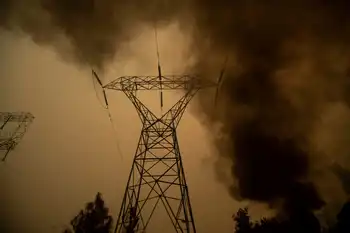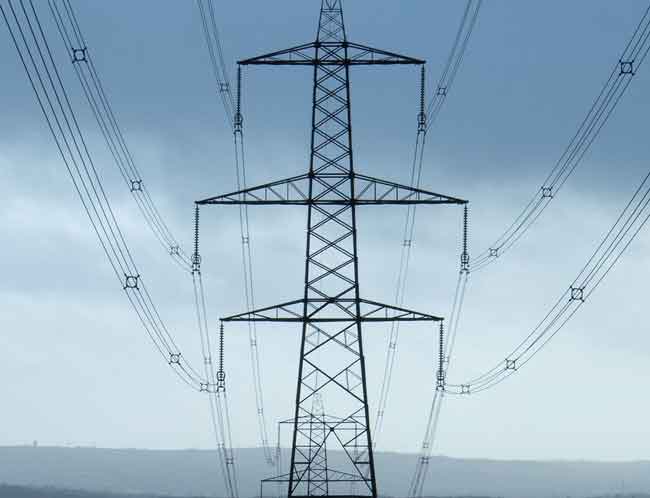Electrocution suspected in Montreal dogÂ’s death
Stunned owner Belkis Barrios chalked up her dog's death just before Christmas to one of life's mysteries. Then she read about the electrocutions of two dogs in Toronto.
With expert opinion to back her up, Ms. Barrios now believes Dingo Boy was electrocuted by one of the stray currents that plague the aging electrical systems of North American cities.
"It occurred to me right away it seemed like he was electrocuted, but how could that be possible?" said Ms. Barrios, a graduate student in Hispanic studies at Université de Montréal.
"Who dies like that? I put it out of my mind at first, but I believe it now."
City workers helpfully disposed of Dingo Boy's body for Ms. Barrios, so she has no vet's examination to confirm her suspicion. But the horrible yelp, wild twitching and sudden death are probable signs of electrocution, according to the head of a U.S. firm that tracks the fatalities.
"It happens with surprising regularity," said Mark Voigtsberger, whose company, Power Quality Testing, has counted more than 200 such electrocutions of people and animals over the past 20 years in Canada and the United States.
Street electrocutions occur when power leaks from improperly insulated or grounded electrical equipment into exposed metallic casings and iron covers.
Hydro-Québec spokesman Jean-Philippe Rousseau dismissed the possibility Dingo Boy was electrocuted, saying the utility has too many fail-safe layers of concrete, insulation and ground lines.
"There was no anomaly reported in the area," Mr. Rousseau said. "The only way this could happen is if an underground transformer exploded while the dog was walking over it, and we would know it if that happened."
Hydro-Québec's reaction was predictable, Mr. Voigtsberger said.
"The reaction is always, 'Can't happen here,' because it happens so sporadically. But when you look at the wider pattern, it happens everywhere."
Dog shocks sounded like urban legend to some officials at Toronto Hydro until two dogs were electrocuted in the city, one in November, a second in January.
The utility is searching for hot spots. With inspections 70 per cent complete, workers have found about 300 rogue currents on exposed surfaces among more than 30,000 pieces of equipment.
"It was absolutely unexpected, but we didn't know what instance of contact current we would find," said Tanya Bruckmueller, Toronto Hydro spokeswoman.
"We had heard of it happening in New York, but the November death was the first we heard of it happening here."
Mr. Voigtsberger said electrical shocks are impossible to eliminate completely. Aging power lines corrode, rodents chew away at wires and maintenance is sometimes faulty; all of these factors can energize the common metal utility equipment on city streets.
The salt and slush of winter add to conductivity.
"In some ways, it's an act of God. But city utilities also don't do enough to test and eliminate it," said Mr. Voigtsberger, based in Everett, Wa.
Dogs are vulnerable, with naked paws and smaller bodies susceptible to death from smaller shocks than humans.
But people die, too. In 2004, Jodi S. Lane died when she strolled with two hounds over an electrified steel plate in New York. The latest death happened Thursday, when a Honolulu man leaned against a lamppost while standing on a ground-level junction box.
The website streetzaps.com reported 30 animal electrocutions last year in Boston, Baltimore, Las Vegas, Chicago, Washington, D.C., and Toronto.
In Vancouver in 2002, a police dog was shocked into cardiac arrest by an improperly grounded steel plate. The police handler resuscitated the dog.
Related News

Here are 3 ways to find out where your electricity comes from
NEW YORK - There are few resources more important than energy. Sure, you may die if you don't eat for days. But your phone will die if you go too long without charging it. Energy feeds tech, the internet, city infrastructure, refrigerators, lights. You get the idea. Yet unlike our other common needs, such as food, energy sources aren't exactly front of mind for most people.
"I think a lot of people don't put a lot of bandwidth into thinking about this part of their lives," said Richard McMahon, the SVP of energy supply and finance at Edison Electric Institute, a…





